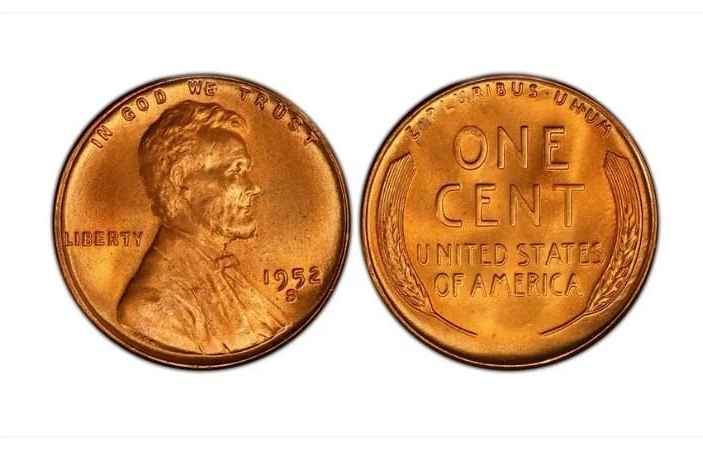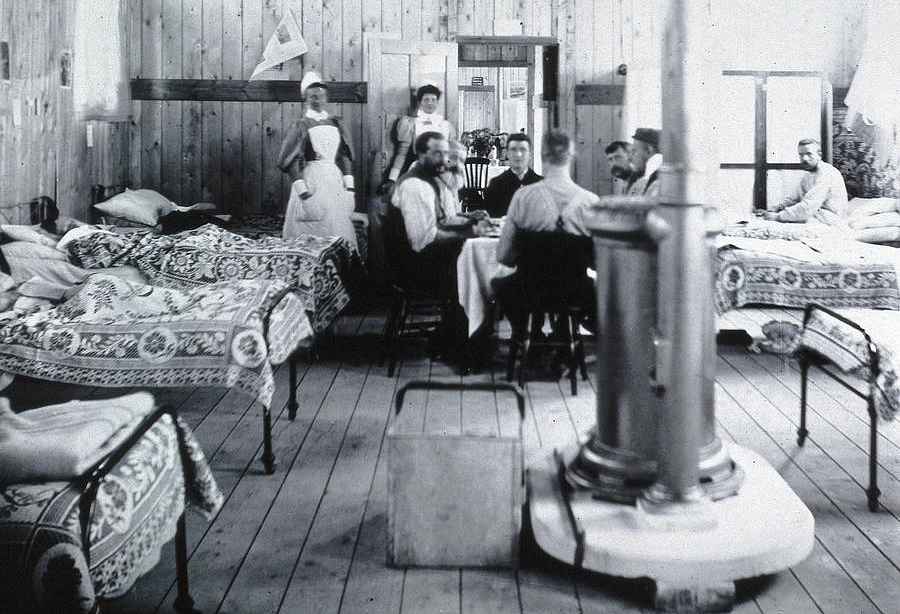






See listing of Recent and Most Popular articles on the Home Page
Health & Wellness
Category: History / Topics: COVID-19 • Crisis • Dying and Death • Disease • Health Care • History • Learning • Science & Technology
Lessons from Eradicating Smallpos
Posted: May 14, 2022
Smallpox used to kill millions of people every year. Here’s how humans beat it.. . . and what we can apply to the COVID pandemic…
Editor's Note: As COVID-19 drags on, frustrating our desire to get back to normal and be done with this scourge, we may not be aware of the history of infectious diseases far worse than what we are facing now. As Kelsey Piper points out in a VOX article updated May 8, 2022 we can gain cnsiderable perspective of both how bad things were in the past and how we can prepare for the future by looking at the terrible scourge of smallpox, which claimed millions of lives every year over centuries. What follows is an excerptfrom the extesive illustrated article. You will find a link to the full article, with additional resources, at the bottom of this page.
More contagious than Covid-19 and with a 30 percent mortality rate, smallpox was one of history’s biggest killers. Now it’s gone.
More than a million Americans have died of Covid-19, and the World Health Organization estimated this Thursday that the global death toll is around 15 million — a horrifying, and largely unnecessary, tragedy.
But for all that the world has lost in the last few years, the history of infectious disease has a grim message: It could have been even worse. That appalling death toll resulted even though the coronavirus kills only about 0.7 percent of the people it infects. Imagine instead that it killed 30 percent — and that it would take centuries, instead of months, to develop a vaccine against it. And imagine that instead of being deadliest in the elderly, it was deadliest for young children.
That’s smallpox. . . .
Smallpox, explained
Smallpox has been around for a very long time. It’s believed that pharaohs died of it in ancient Egypt. It devastated the Americas in the early 1500s after being introduced through contact with Europe. It altered the course of the Revolutionary War, with outbreaks in New England that cost the Continental Army the Battle of Quebec.
Its toll throughout history is hard to measure, but in the 20th century alone it is estimated to have killed between 300 million and 500 million people. “In the contest of Smallpox versus War, War lost,” D.A. Henderson, former director of disease surveillance at the Centers for Disease Control and Prevention, wrote in his 2009 book Smallpox: The Death of a Disease, noting that even the most devastating wars of the 20th century — World War I and World War II — had a combined death toll much smaller than that of smallpox. , , ,
The disease, like Covid-19, was primarily transmitted through close contact, especially in indoor spaces. Our best estimate, though, is that it had an infectiousness between 5 and 7, putting it between that of Covid’s delta (4) and omicron variants (8). Due to smallpox’s high R0 and the devastating mortality rate, it was not uncommon for an outbreak of smallpox in an area without preexisting immunity to kill 30 percent of everyone in the community. In some contexts, such as when it spread through the Americas after being introduced by Europeans, the death rate is believed to have been even higher.
How we eradicated smallpox
Before modern vaccine development, humans had to get creative in slowing the spread of infectious disease. It was known that people who’d survived smallpox didn’t get sick again. In China, as early as the 15th century, healthy people deliberatelybreathed smallpox scabs through their noses and contracted a milder version of the disease. Between 0.5 percent and 2 percent died from such self-inoculation, but this represented a significant improvement on the 30 percent mortality rate of the disease itself.
In England, in 1796, doctor Edward Jenner demonstrated that contractingcowpox — a related but much milder virus —conferred immunity against smallpox, and shortly after that, immunization efforts began in earnest across Europe. By 1813, the US Congress passed legislation to ensure the availability of a smallpox vaccine that reducedsmallpox outbreaks in the country throughout the 1800s. . . .
By 1900, smallpox was no longer quite as much of a scourge in the world’s richest countries.In the 1800s, about 1 in 13 deaths in London were caused bysmallpox; by 1900, smallpox caused only about 1 percent of deaths. Several countries in Northern Europe had alsodeclared the disease eradicated. Over the next few decades, more of Europe, and then the US and Canada, joined them. . . .
It was not until the 1950s that a truly global eradication effort began to appear within reach, thanks to new postwar international institutions. The World Health Organization (WHO), founded in 1948, led the charge andprovided a framework for countries that were not always on friendly terms to collaborate on global health efforts.
Even then, there were skeptics. “One hurdle the Eradicators faced was skepticism within the scientific community,” Henderson writes, “about the feasibility and practicality of eradicating an infectious disease.”
After all, no disease had ever been eradicated before. There were billions of people in the world, under myriadgovernments, many of them in regions actively at war. Global coordination on the scale eradication would demand was unprecedented. Plus, there had already been a failed attempt to eradicate malaria.The goal of eliminating every smallpox case in the world, rather than just suppressing the virus, sounded implausibly lofty.
“There was no shortage of people telling [the people involved in the eradication effort] that their effort was futile and they were hurting their career chances,” former CDC director William Foege wrote in his 2011 book House on Fire about the smallpoxeradication effort. . . . .
Henderson calls the switch to ring vaccination a pivotal strategic change for the fight against smallpox. Instead of fighting for 100 percent vaccination, which was proving unachievable in low-income countries, it let public health teams focus their resources where they were needed most. . . .
As large parts of the world were declared smallpox-free, resources could be more intensively focused in the areas where outbreaks were still happening. While in 1950 a smallpox outbreak in a developing country might attract little international interest, by 1970 it attracted the world’s best disease surveillance and response resources. Contact tracers tried to identify everyone exposed and figure out where the virus might have come from. Communities were swiftly vaccinated. Case numbers kept declining.
In 1975, the world marked the last wild Variola major case, in Bangladesh. In 1977, it marked the last wild Variola minor case, in Somalia. Doctors tracked down and vaccinated every potential contact of the case; none of them contracted the disease. Surveillance around the world found no more cases anywhere.
Two years later, on May 8th, 1980, the World Health Assembly declared victory over smallpox.
Lessons for the present, and the future
Humanity’s triumph over smallpox should stand out as one of our proudest moments. It called on scientists and researchers from around the world, including collaborations between rivalcountries in the middle of the Cold War.
Unfortunately, we’ve never replicated that success against another virus that affects humans. With some, such as polio, we’re drawing close. Wild polio has been eradicated in Africa and remains only in conflict-torn regions of Afghanistan and Pakistan.“Ring vaccination,” as practiced in the smallpox battle, has been successfully used in public health efforts against other diseases, most recently with the new Ebola vaccine, used against outbreaks in the Democratic Republic of Congo.
But in other cases, like HIV and Covid-19, we’ve let new diseases grow to pandemic proportions. And while those diseases have had devastating effects, it’s worth keeping in mind that they could have been even worse. Some viruses with the potential to escape laboratories or make the jump from animals to humans are as deadly and transmissible as smallpox, and Covid-19 has made it clear that we’re not prepared to handle them. . . . .
In the broader context of humanity’s fight against infectious disease, it’s fair to think of the coronavirus as a close call. As bad as it has been, it could have been much worse. It could have been more transmissible; it could have been deadlier. Diseases far worse than Covid-19 have appeared throughout human history, and there’s every reason to believe we may someday face one again.
The devastation of Covid-19 has hopefully made us aware of the work public health experts and epidemiologists do, the crucial role of worldwide coordination and disease surveillance programs (which are still underfunded), and the horrors that diseases can wreak when we can’t control them.
We haveto do better. The history of the fight against smallpox proves that we’re capable of it.
Read the full article and see more resources at VOX.
Search all articles by Kelsey Piper
Posted: May 14, 2022 Accessed 423 times
![]() Go to the list of most recent Health & Wellness Articles
Go to the list of most recent Health & Wellness Articles
![]() Search Health & Wellness (You can expand the search to the entire site)
Search Health & Wellness (You can expand the search to the entire site)
![]() Go to the list of Most Recent and Most Popular Articles across the site (Home Page)
Go to the list of Most Recent and Most Popular Articles across the site (Home Page)
 Loading requested view...
Loading requested view...